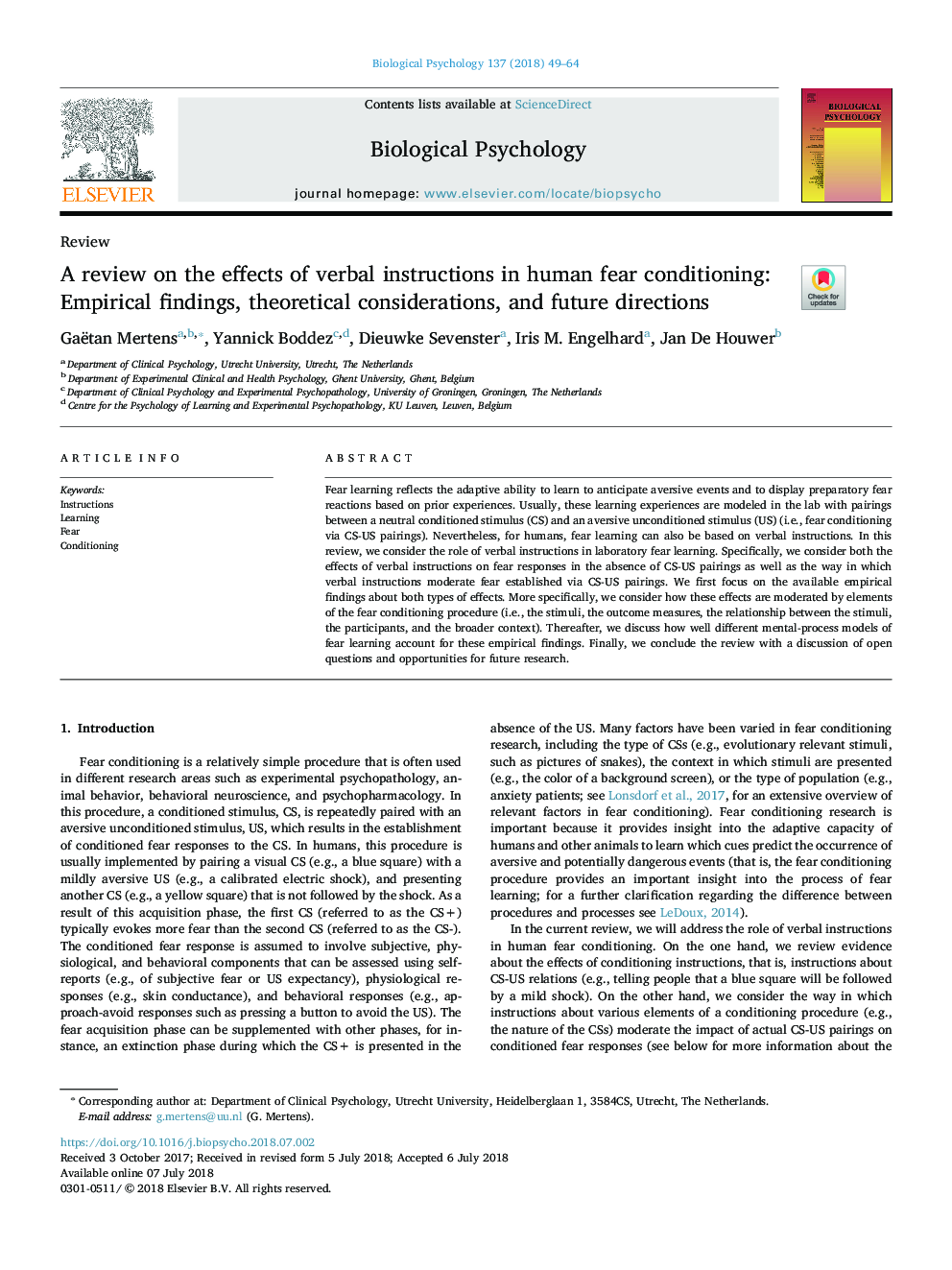| Article ID | Journal | Published Year | Pages | File Type |
|---|---|---|---|---|
| 7278047 | Biological Psychology | 2018 | 16 Pages |
Abstract
Fear learning reflects the adaptive ability to learn to anticipate aversive events and to display preparatory fear reactions based on prior experiences. Usually, these learning experiences are modeled in the lab with pairings between a neutral conditioned stimulus (CS) and an aversive unconditioned stimulus (US) (i.e., fear conditioning via CS-US pairings). Nevertheless, for humans, fear learning can also be based on verbal instructions. In this review, we consider the role of verbal instructions in laboratory fear learning. Specifically, we consider both the effects of verbal instructions on fear responses in the absence of CS-US pairings as well as the way in which verbal instructions moderate fear established via CS-US pairings. We first focus on the available empirical findings about both types of effects. More specifically, we consider how these effects are moderated by elements of the fear conditioning procedure (i.e., the stimuli, the outcome measures, the relationship between the stimuli, the participants, and the broader context). Thereafter, we discuss how well different mental-process models of fear learning account for these empirical findings. Finally, we conclude the review with a discussion of open questions and opportunities for future research.
Keywords
Related Topics
Life Sciences
Neuroscience
Behavioral Neuroscience
Authors
Gaëtan Mertens, Yannick Boddez, Dieuwke Sevenster, Iris M. Engelhard, Jan De Houwer,
